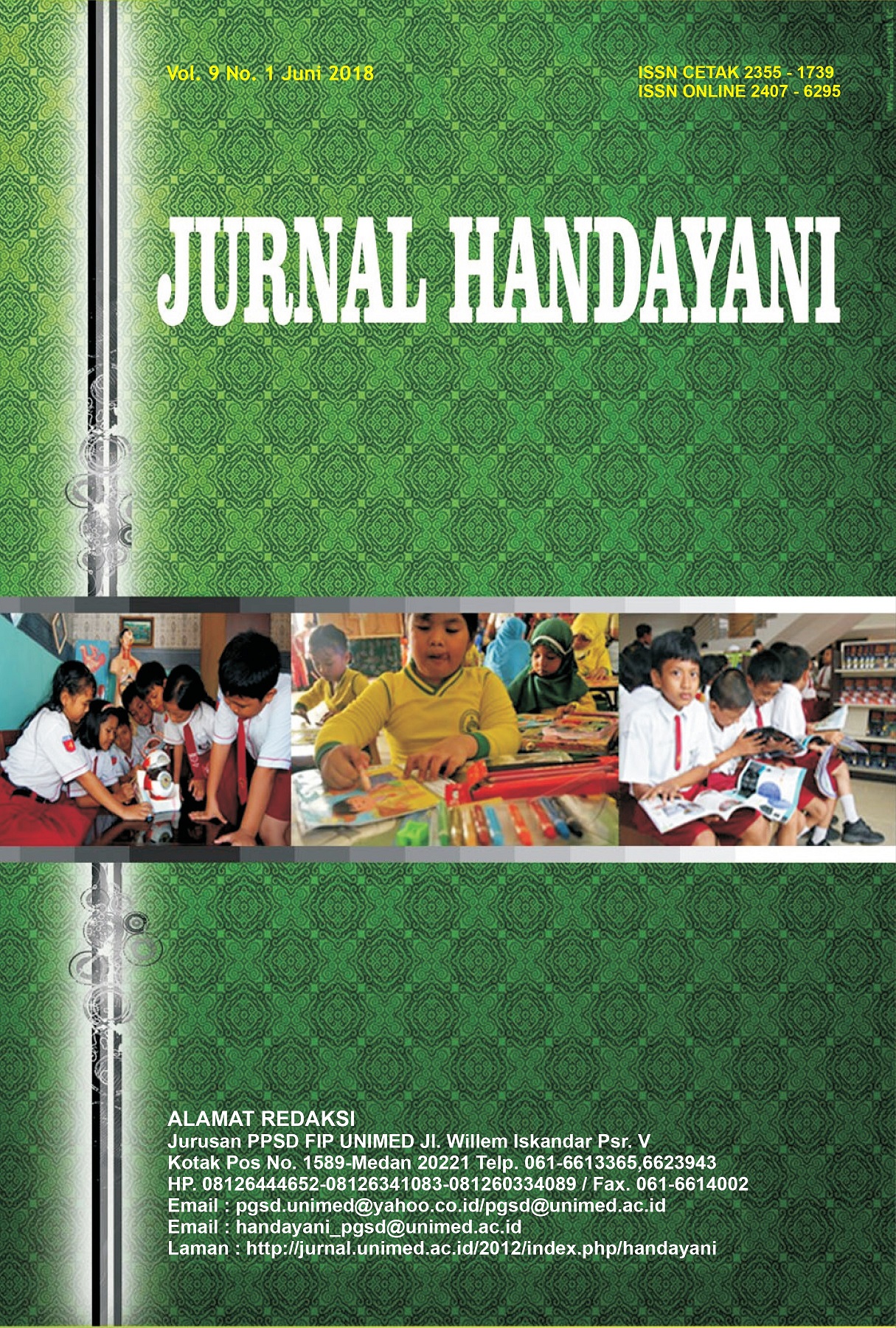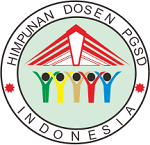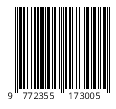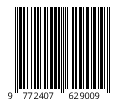KEEFEKTIFAN MODEL PEMBELAJARAN TALKING STICK BERBANTU MEDIA UTAMA (ULAR TANGGA MATEMATIKA) TERHADAP HASIL BELAJAR MATEMATIKA SISWA KELAS V SDN REJOSARI 02
DOI:
https://doi.org/10.24114/jh.v9i1.10513Abstract
Abstrak : Keefektifan Model Pembelajaran Talking Stick Berbantu Media UTAMA (Ular Tangga Matematika) Terhadap Hasil Belajar Matematika Siswa Kelas V SDN Rejosari 02. Jenis penelitian ini adalah penelitian kuantitatif dalam bentuk Pre-Eksperimental Design dengan rancangan One-Group Pretest-Posttest Design. Populasi penelitian ini adalah seluruh siswa kelas V SD Negeri Rejosari 02 tahun pelajaran 2017/2018. Sampel yang diambil adalah seluruh siswa kelas V yang berjumlah 21 siswa dengan menggunakan teknik Nonprobability Sampling berbentuk sampling jenuh. Hasil analisis terhadap motivasi belajar matematika siswa yang dihitung menggunakan Uji-t dengan jumlah = 21 siswa dengan rata-rata pretest = 24,44 dan post-test = 82,13 diketahui berdasarkan perhitungan diperoleh t-hitung sebesar -17,201 sedangkan t-tabel 1,720 dengan db N-1= 21-1=20, dengan taraf signifikan 0,05 sebesar 1,720 karena t-hitung < t-tabel yaitu -17,201 < 1,720 maka H0 ditolak dan Ha diterima. Jadi terdapat perbedaan nilai hasil belajar lebih baik antara sebelum (pretest) dan sesudah (post-test) yang menggunakan model Talking Stickberbantu media UTAMA (Ular Tangga Matematika).Kata Kunci : Hasil Belajar , Model Talking Stick, Keefektifan Abstract: Effectiveness Of Talking Stick Learning Models Assisted Media UTAMA (Snake Ladder Mathematics) To Learning Mathematics Students Class V SDN Rejosari 02. This research type is quantitative research in the form of Pre-Experimental Design with One-Group Pretest-Posttest Design . The population of this research is all students of class V SD Negeri Rejosari 02 year lesson 2017/2018. Samples taken were all students of class V which amounted to 21 students using Nonprobability Sampling technique in the form of saturated sampling. The result of the analysis on students' mathematics motivation which is calculated using t-test with the number = 21 students with the average pretest = 24,44 and post-test = 82,13 known by calculation obtained t-count equal to -17,201 while t-table 1,720 with db N-1 = 21-1 = 20, with a significant level of 0.05 of 1.720 because t-count <t-table is -17.201 <1.720 then H0 is rejected and Ha accepted. So there are differences in the value of better learning outcomes between before (pretest) and after (post-test) using Talking Stick model assisted media UTAMA (Snake Ladder Mathematics).Keywords : Learning Outcomes, Model Talking Stick, EffectivenessDownloads
Published
2018-08-20
How to Cite
., Y., Handayanto, A., & Setianingsih, E. S. (2018). KEEFEKTIFAN MODEL PEMBELAJARAN TALKING STICK BERBANTU MEDIA UTAMA (ULAR TANGGA MATEMATIKA) TERHADAP HASIL BELAJAR MATEMATIKA SISWA KELAS V SDN REJOSARI 02. JURNAL HANDAYANI PGSD FIP UNIMED, 9(1). https://doi.org/10.24114/jh.v9i1.10513
Issue
Section
Articles
License
Copyright (c) 2018 Yuliaislahah ., Agung Handayanto, Eka Sari Setianingsih

This work is licensed under a Creative Commons Attribution-ShareAlike 4.0 International License.
Authors published with the Handayani PGSD FIP UNIMED Journal agree to the following terms:
- Authors retain copyright and grant the journal the right of first publication with the work simultaneously licensed under a Creative Commons Attribution License (CC BY-SA 4.0) that allows others to share the work with an acknowledgment of the work's authorship and initial publication in this journal.
- Authors are able to enter into separate, additional contractual arrangements for the non-exclusive distribution of the journal's published version of the work (e.g., post it to an institutional repository or publish it in a book), with an acknowledgment of its initial publication in this journal.
- Authors are permitted and encouraged to post their work online (e.g., in institutional repositories or on their website) prior to and during the submission process, as it can lead to productive exchanges, as well as earlier and greater citation of published work. (See The Effect of Open Access)
















